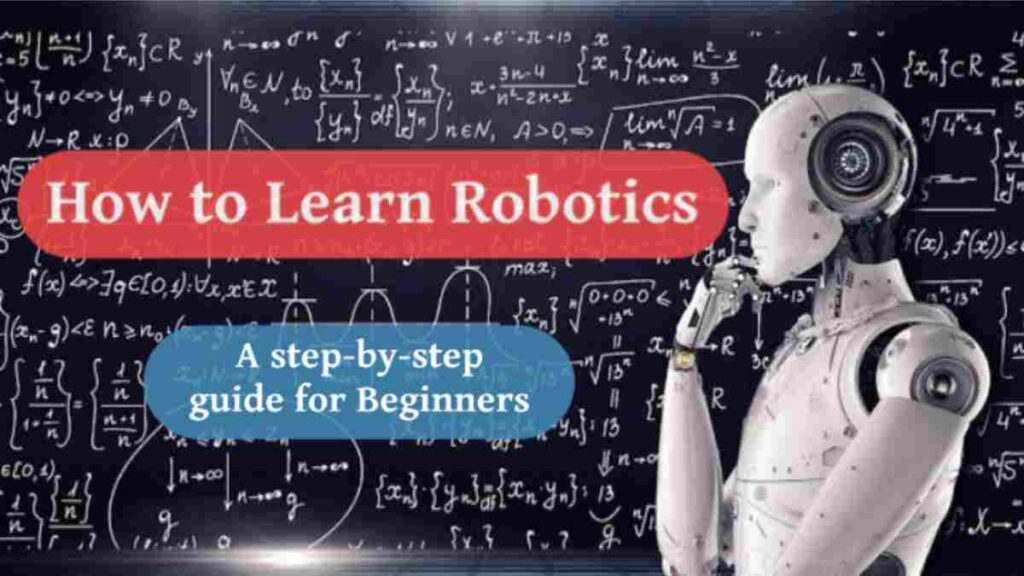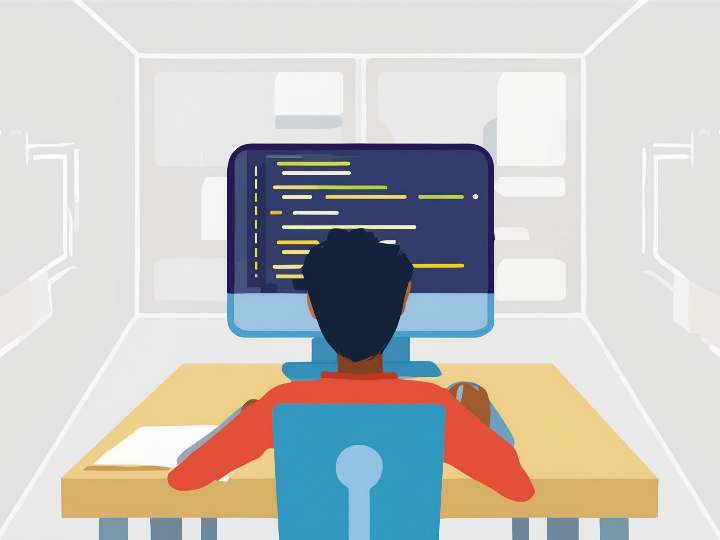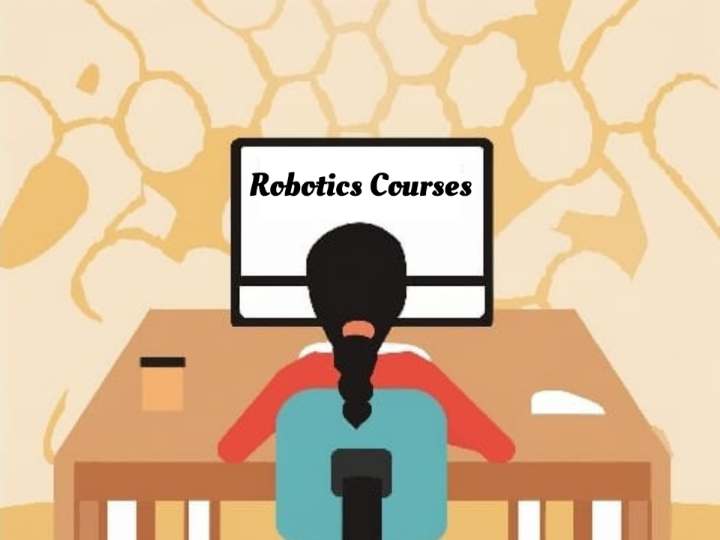Are you looking for the answer to “How to Learn Robotics”? Are you willing to take the first step in your robotics journey?
That’s why you are here, right? You are in the right place. And I promise this article will not disappoint you.
Seeing the AI boom in 2022, anyone can predict that robotics is the future. Technological advancements in artificial intelligence are spreading very rapidly. There are no more days when there will be a robot in everyone’s home like our Android phone.
Robotics is no longer a field only reserved for mad scientists and engineers. There are many online platforms providing so many useful courses on robotics and AI.
It’s not that I’m so smart. It’s just that I stay with problems longer.
Albert Einstein
In this quote, Einstein wanted to say that anyone can learn anything. With the right strategies for learning robotics you can make your own robot.
Whether you want to build futuristic drones or a manufacturing equipment company, you have to know “how to learn robotics“.
So let’s dive into the world of robotics and explore how to learn robotics from scratch!

Table of Contents
What is Robotics?
Robotics is a fascinating field that connects science fiction to reality. It brings life to the machines that once existed only in our wildest imaginations. Fundamentally, robotics is the interdisciplinary study of designing, constructing, and operating robots. These intelligent machines can perform any tasks autonomously or with human guidance.
If you’re curious about “How to Learn Robotics” or “What to Learn for Robotics,” you’re in for an exciting journey. Get ready to challenge your problem-solving skills, creativity, and passion for innovation.
What are some of the career Opportunities in Robotics?
Robotics is a field of endless possibilities. It offers a diverse range of career opportunities. By mastering the art of “How to Learn Robotics,” you unlock the doors to a world of exciting professions that drive innovation and shape the future.
- Robotics Engineer: As a robotics engineer, you’ll be responsible for designing, developing, and testing robotic systems. You will programme intricate control algorithms and integrate advanced sensors and actuators. Your expertise will breathe life into intelligent machines that revolutionise industries.
- Machine Learning Engineer: By combining robotics with the power of machine learning, you can create robots that adapt, learn, and make intelligent decisions. As a machine learning engineer, you’ll develop algorithms that enable robots to perceive their environment. You’ll help them recognise patterns and optimise their performance.
- Computer Vision Engineer: Computer vision is crucial for enabling robots to interpret and understand visual data. As a computer vision engineer, you’ll develop algorithms and systems for robots to navigate and recognise objects. You’ll also help them interact with their surroundings.
- Mechatronics Engineer: Mechatronics engineers combine mechanics and electronics. They design and build the physical components that make up robotic systems. Their expertise helps ensure seamless integration of mechanical and electronic elements in robotic systems.
- Automation Engineer: These engineers use robotics to boost efficiency and productivity. You’ll develop automated systems, programme robotic controllers, and optimise workflows.
Do you know what the main purpose of robotics is? We’re not pursuing artificial intelligence to beat humans at games. We aim to partner with humans to take on the world’s greatest challenges. By pursuing a career in robotics, you’ll be at the forefront of this partnership. You will shape the future of technology. You will solve complex problems that impact our world.
How to Learn Robotics For Beginners?
Practice Coding

According to me, the first step towards your robotics journey is coding. Programming is the way to communicate with robots. The foundations of how to learn robotics at home lies in coding. Machine learning and robotics will become a key part of our lives over the upcoming years.
One of the most popular programming languages for learning robotics is Python. Its simplicity and readability make it an ideal choice for how to learn robotics as an adult or as a beginner.
Imagine yourself being able to create algorithms that control a robot’s movements. You could also process sensor data seamlessly. Additionally, you can implement machine learning models for advanced decision-making. Python enables your robotic creations to learn, adapt, and perform complex tasks effortlessly.
Learn the Foundations

Mastering mathematics and physics is similar to build the pillar of a big mansion in this field. Robotics totally relies on subjects like algebra, trigonometry, calculus, mechanics, and electronics. These subjects will help you to analyse the difficult parts of robotic systems. It will help you to solve complex problems and make groundbreaking discoveries.
- Trigonometry determines the angles and positions of robotic arms and joints.
- Calculus will help you understand the dynamics of robotic systems. It will help you to optimise the trajectories and control the algorithms.
- Mechanics and electronics control the design and operation of robots.
Take Online Classes

In this digital age, the world has become an advanced classroom. “Learning Robotics Online” has never been more accessible than today. Imagine being able to delve into topics like “How to Learn Robotics and AI” from the comfort of your home. Udemy and Coursera provide a lot of knowledge, allowing you to learn at your own pace and convenience. You can check out our latest article on “Top 10 Websites on Robotics” to take your first online class.
These online classes bring expert instructors right to your fingertips. They guide you with clear explanations and practical examples. By taking advantage of these resources, you’ll not only accelerate your learning but also join a community of fellow robotics enthusiasts. You can collaborate and share knowledge with each other’s how to learn robotics from scratch.
ROS (Robot Operating Systems)

Now it’s time to put your theoretical understanding of robotics into practice. Let’s learn how to learn robotics from scratch.
ROS or Robot Operating System, is an open-source framework for robot software development. It’s not an actual operating system like Windows or macOS. It is rather a set of tools and libraries that simplify common robotics tasks.
Once you know how to use ROS efficiently, you will be able to set up new software for a new robot in less time. ROS provides features like hardware abstraction, device drivers, communication between processes, and more. This makes it easier for developers to create complex robotic applications without having to write code from scratch. The more you know about ROS, the easier it will become for you to programme and understand the code of any robot.
3D Design Software

Let’s say you have imagined what your robot will look like, but how will you design it? Here comes designing software like Blender or SolidWorks.
Software like Blender and SolidWorks offer a digital canvas for sculpting. These software sculpts difficult shapes and structures that will inhabit the tangible world.
Blender, or SolidWorks, empowers you to bring your imagination to life. I can remember my excitement about 3D printing my first robotic component! Start by learning basic modelling, textures, animations, and simulations through online Blender tutorials. Gradually level up to sculpting, rigging, and coding complex robot parts and assemblies.
By mastering 3D design software, you’ll bring your robotic visions to life. You’ll bridge the gap between the virtual and physical worlds.
Make Robotics Projects

Making robots is a hard work requiring grit and vision.
What I cannot create, I do not understand.
Richard Feynman
I fondly remember how I struggled to design my first robotics college project aiming to sort recycling!
You can start by identifying real-world problems that spark your passion. Break your big goals into tangible subtasks. Achieve it through available tools and libraries for interfacing sensors, motors, and AI. Stay determined through long hours of coding, 3D modelling, and soldering. Leverage online communities when you get stuck.
Celebrate small milestones like getting a robot arm to wave. Keep challenging yourself to learn new skills. You will soon gain the self-confidence to build robots that improve lives!
Become a Robotics Engineer

There is no doubt that, Robotics Engineering will be one of the most demanding career in future. Obviously it is going to be one of the most high paying job. There are some companies who provides more over $90,000-$100,000 USD in many countries.
Robotics engineering fuses imagination with rigor to create previously unthinkable solutions. Obtain specialized training through robotics degrees, certifications and internships to stand out.
Most of the company prefers to take bachelor’s or master’s degree student in robotics engineering or related to that field. Build transferable skills in communication, collaboration and critical thinking.
Final Thoughts
Stay curious; allow yourself to be immersed in the journey of robotics. Celebrate small wins and be energised by collaborators on how to learn robotics on your own. There will be some small obstacles in your path, but you have to hold on to your vision. Who knows what a futuristic, and perhaps one of the best robotics applications you may create!
You may one day create roving robots that reverse environmental damage or develop prosthetics. Keep focused on using technology ethically to uplift the world. The future of robotics remains unwritten. You can be the author of its next-generation chapter through your contributions!
FAQs : Frequently Asked Questions
How do I start learning robotics?
Start your robotics journey by learning programming languages like Python and C++. You have to also study mechanics, electronics and control systems.
Can I learn robotics on my own?
Yes, you can learn robotics on your own through online courses, tutorials, books, and hands-on projects using robot kits.
Is robotics hard to learn?
Robotics can be challenging as it involves diverse fields like programming, mechanics, electronics, and control theory.
Is robotics a lot of math?
Yes, robotics involves a significant amount of math. It includes calculus, linear algebra, trigonometry, and statistics.
Can I learn robotics without coding?
While coding is a crucial part of robotics, it’s possible to learn some aspects without coding initially.
How many years does it take to learn robotics?
With consistent effort, you can gain a solid foundation in 1-2 years on robotics field.
Is robotics a good career?
Robotics is a good career prospects due to increasing automation across various industries.









